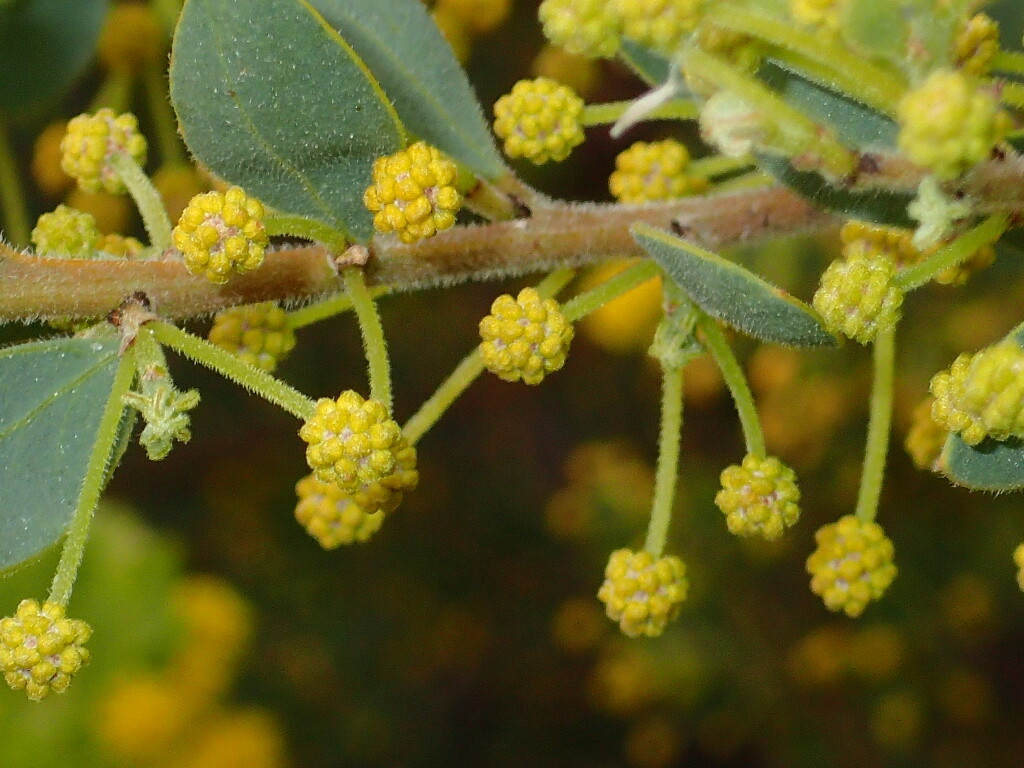Acacia brachybotrya
Benth. Grey MulgaRounded shrub, 1–3 m high; branchlets variably hairy, sometimes glabrous. Phyllodes variable, normally slightly asymmetrically oblong-elliptic to oblong-obovate (but frequently narrowly so) or obovate to oblanceolate, usually 1–3 cm long and 4–13 mm wide, 1.5–3.5 times as long as wide, indumentum similar to branchlets, hairs if present scattered, sometimes glabrous, grey-green to glaucous, obtuse to subacute; 1-veined, lateral veins not prominent; gland very small, near centre of upper margin, second gland sometimes present just above pulvinus. Inflorescence 1–5-headed, rachis 0.5–5 mm long, hairy or glabrous; peduncles slender, 4–15 mm long, hairy, sometimes glabrous; heads globular, 18–30-flowered, golden. Flowers 5-merous; calyx variably dissected. Pods linear to narrowly oblong, to 9 cm long, 4–8 mm wide, firmly chartaceous to coriaceous, glabrous or hairy, dark brown or black, lightly pruinose; seeds longitudinal, 4–5.5 mm long, subshiny, brown to black, punctate about centre, funicle short, aril enlarged. Flowers Jul.–Oct.
LoM, MuM, Wim, VRiv, RobP, MuF, GipP, Gold, GGr, DunT, NIS. Also SA, NSW. Extending through north-western Victoria, growing in a variety of soils, in mallee communities on sandy loam soils, or in taller woodland on more fertile loams.
A very polymorphic species, morphologically very similar to A. dictyocarpa, the latter being distinguished by the appressed hairs that are silvery or golden on new shoots, whereas A. brachybotrya has more or less patent hairs on new growth. There is no apparent disjunction in the distribution of these two species.
Hybrids between A. brachybotrya and A. calamifolia are referred to A. ×grayana.
Entwisle, T.J.; Maslin, B.R.; Cowan, R.S.; Court, A.B. (1996). Mimosaceae. In: Walsh, N.G.; Entwisle, T.J., Flora of Victoria Vol. 3, Dicotyledons Winteraceae to Myrtaceae, pp. 585–658. Inkata Press, Melbourne.
 Spinning
Spinning


